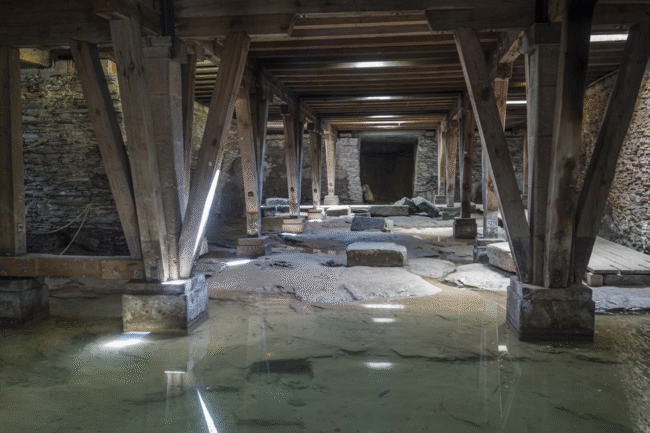
Did you just discover a soggy surprise in your basement? You’re not alone, and you’re certainly not powerless. Approximately 98% of basements in the U.S. will experience some form of water damage during their lifespan.
A flooded basement can hit like a ton of bricks—one part panic, one part confusion, and a good splash of “what now?” Your home takes a hit, your nerves are shot, and you feel like you’ve been tossed in at the deep end without a life jacket.
But here’s the good news: quick, clear-headed action can save the day. The faster you get organized, the less damage your home, wallet, and peace of mind will suffer. Roll up those sleeves. Let’s turn your flood nightmare into a cleanup victory.
Immediate Steps to Take After Discovering Basement Flooding
There’s no sugarcoating it—when you spot water where it shouldn’t be, the clock is ticking. Take a deep breath. Get ready to act, not react.
Ensure Personal Safety First
Basements on a good day are dark, cramped, and full of cobwebs. Add water, and they become downright risky. Don’t rush in. Think safety before anything else.
- Check for electrical hazards. If you see or even suspect electrical wires have been touched by water, stay out. Go to your circuit breaker and shut off power to the basement first.
- Check for gas leaks and strange smells. If you catch a whiff of gas or any chemical odor, call professionals right away.
- Wear protective gear. Think rain boots, rubber gloves, face masks, and even goggles. Basements can turn into petri dishes for bacteria after flooding.
- Watch your step. Standing or fast-moving water hides debris, holes, or sharp objects below the surface. Move slowly and carefully.
Remember, a flooded basement isn’t just a big puddle—it’s a hazard zone. Take care of yourself first.
Stop the Source and Prevent Further Water Intrusion
Before you can mop up the mess, you’ve got to fix the leak. It’s like bailing water from a rowboat with a hole—you’ll get nowhere unless you plug the hole first.
- Identify the source. Is it a busted pipe? Heavy rain? Sewer backup?
- Pipe burst: Turn off your home’s main water supply.
- Sump pump fail: Check the pump, reset the breaker, or unplug and replug.
- Stormwater or groundwater: Block further entry if possible using towels, sandbags, or other barriers.
- Divert outside water. Move downspouts and gutters away from basement windows or foundation.
- Call a plumber if you can’t find or stop the source fast.
Document the Damage for Insurance
Don’t wait to start cleaning before you have a record of the chaos. Your future self (and your insurer) will thank you.
- Take wide-angle photos to show the whole space.
- Snap close-ups of individual damaged items and soaked spots.
- Make a list of everything that’s been affected, from furniture to appliances to personal keepsakes.
- Record the water depth and any “tide marks” on walls or objects.
- Save receipts for any supplies or emergency services.
Contact Your Insurance Provider and Professionals
You’ve done the detective work. Now let the pros back you up. Call your homeowner’s insurance provider. Go over your policy and file a claim right away. Time is money here.
- Ask about coverage for basement floods and personal property.
- Find out if you need professional water damage restoration. Many insurers want the experts involved from the start.
- Call a restoration company if water levels are high or sewage is involved, or if you’re not sure what to do after basement floods. Don’t wait for things to get worse. Get the insurance and pro backup you need right now.
How to Clean Up and Restore Your Flooded Basement
Now comes the gritty part—getting your basement back on track. Cleaning up a flooded basement is like prospecting for gold: a little know-how, lots of effort, and knowing when to call in the cavalry.
Safely Remove Standing Water and Wet Items
Ready for that water to be gone? Here’s what to do.
- For small puddles: Use a wet/dry shop vac. Keep your extension cords high and dry.
- For several inches (or more): Use a submersible pump, or call in professional water extraction teams for deep jobs.
- Move fast to remove soaked items. Wet carpeting, boxes, and furniture pieces need to get out to stop mold.
- Sort items: Salvage what you can, but don’t take risks with soaked electrical gear or anything growing mold. When in doubt, toss it.
Never mix floodwater and regular home vacuum cleaners
Thoroughly Dry and Dehumidify the Area
Getting your basement dry isn’t just about feeling cozy. Moisture left behind is an open invite for mold and rot.
- Open windows and doors to boost ventilation.
- Set up fans and dehumidifiers to keep air moving and suck up hidden moisture.
- Dry everything you can—walls, floors, and personal items.
- Lift up carpets and pads if you hope to save them; moisture gets trapped underneath.
Clean, Disinfect, and Prevent Mold Growth
Water ruins more than just your good mood. It brings bacteria and mold—enemies that don’t go down easy.
- Scrub hard surfaces with hot, soapy water.
- Disinfect with a bleach solution (about one cup bleach to five gallons water)—don’t mix bleach with ammonia.
- Let things dry, then inspect for new spots or musty smells.
- Bag and toss unsalvageable items right away
